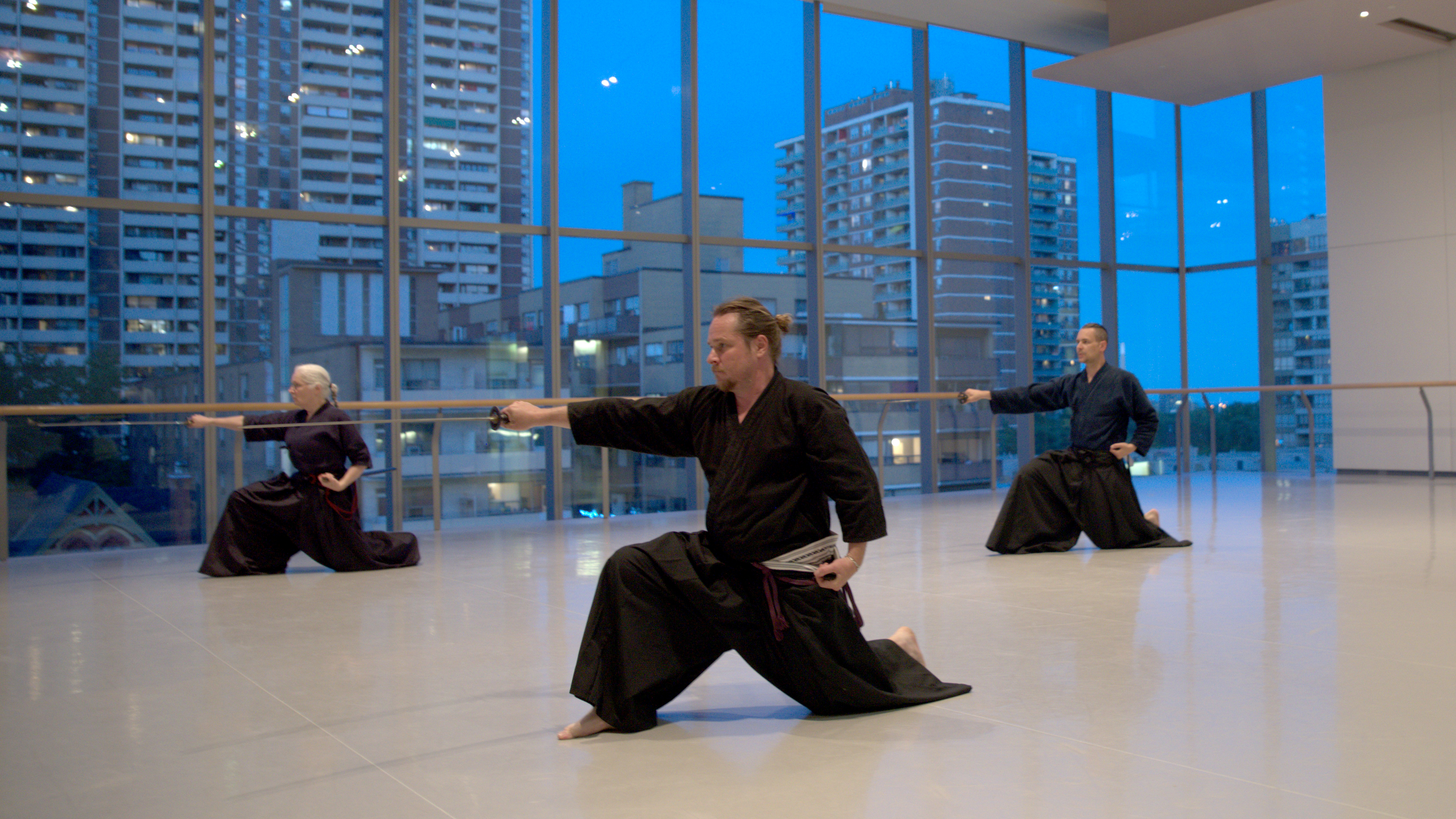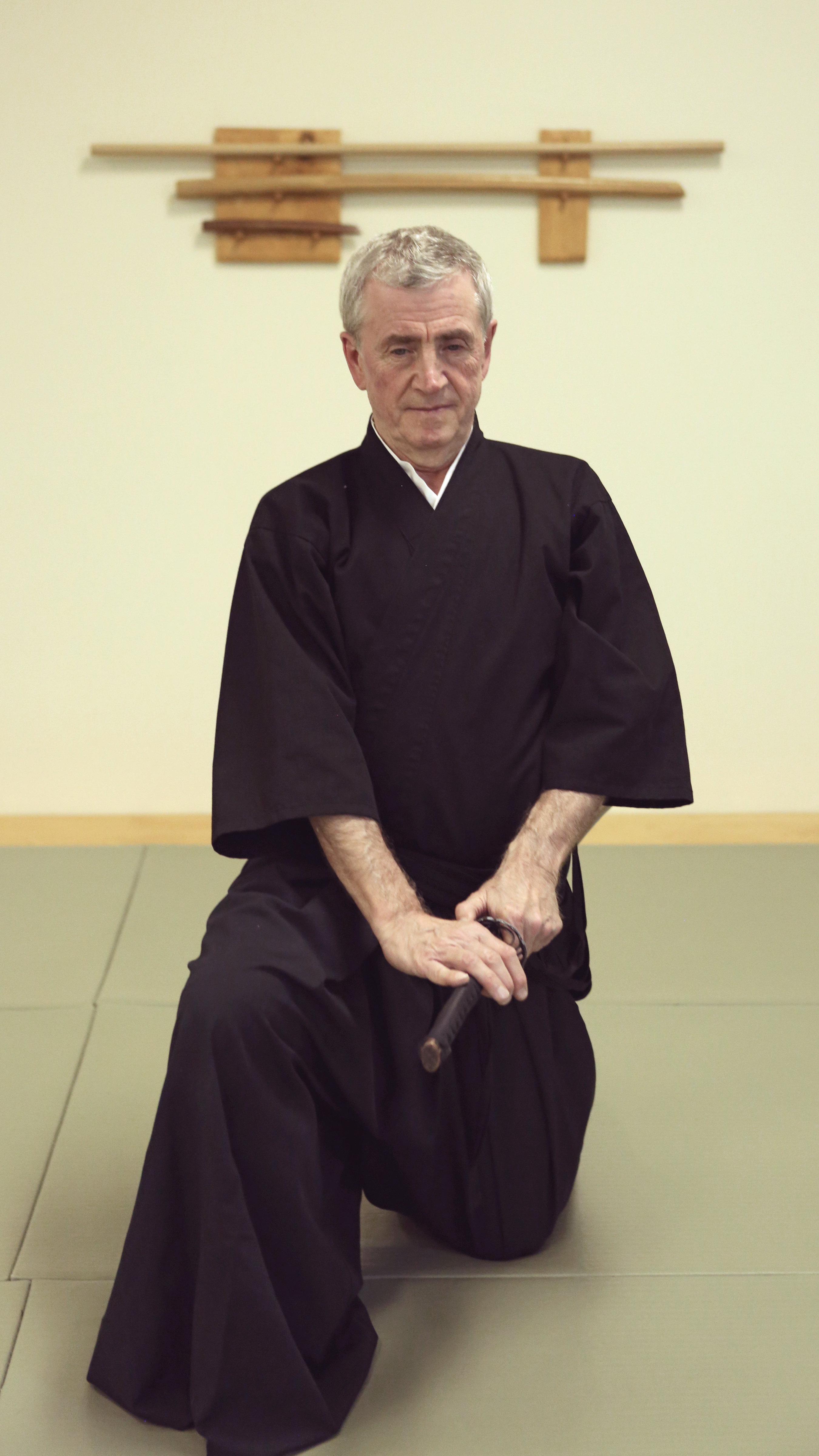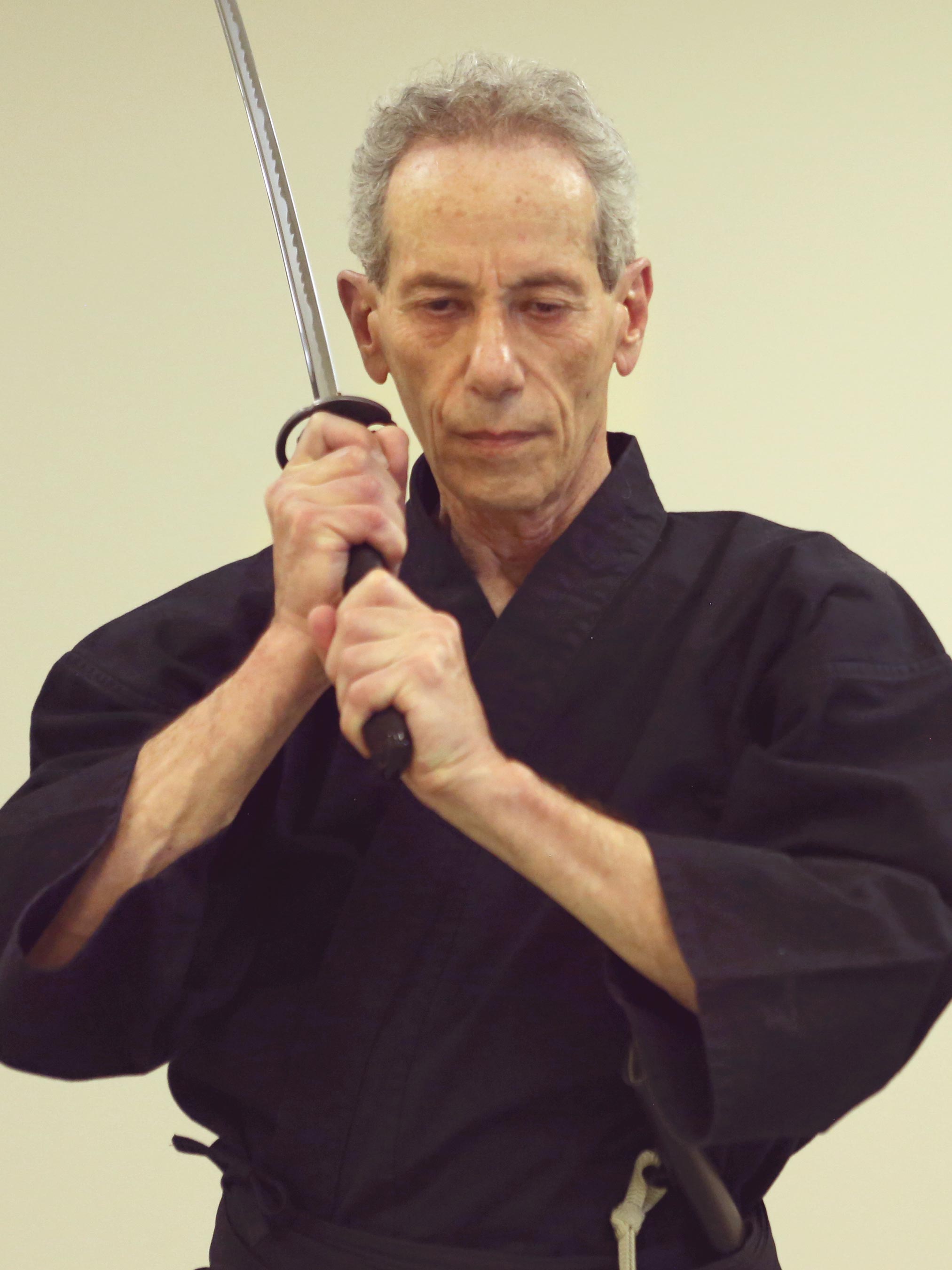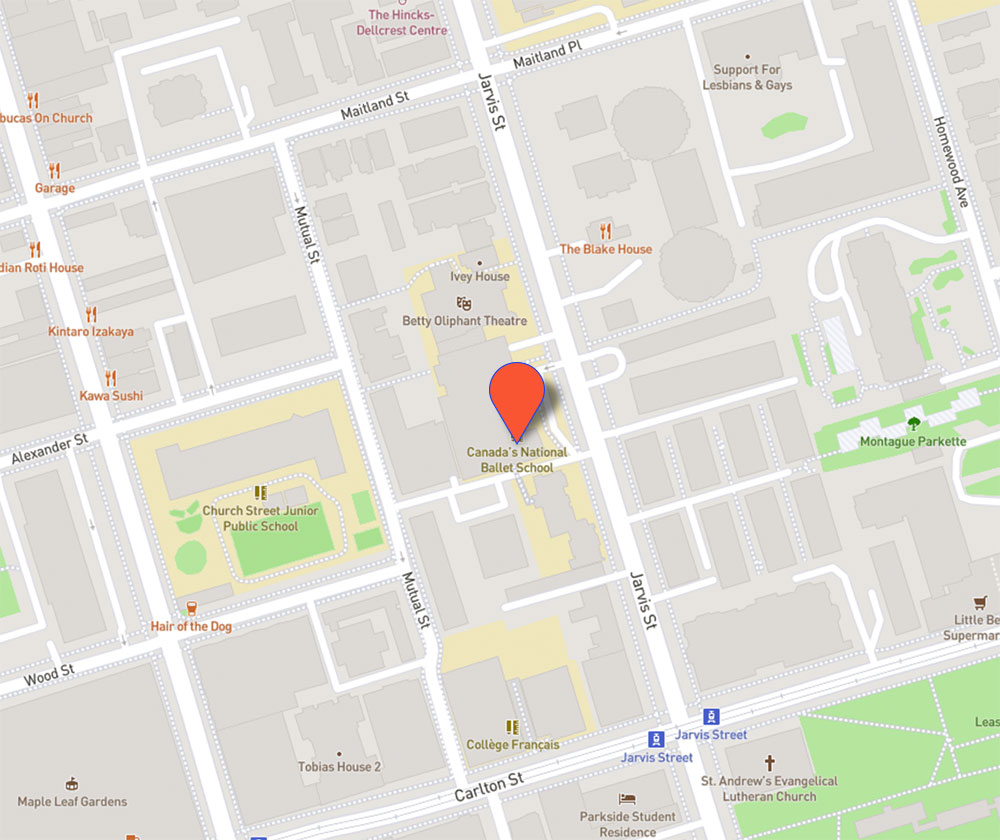Toronto Iaido
Discover your inner warrior
Welcome
Are you searching for a sense of calm in the midst of chaos? Perhaps you should consider bringing a martial art practice into your life. You can invite stress to leave, and tranquility to exist through the discipline, dedication, meditation and movement of Iaido. Iaido is a Japanese martial art handed down through a long lineage from the Samurai tradition. It is practiced with an authentic Japanese blade called the Katana, (although in the first years of being a student, one uses a “Iaito” with a blunt edge for safety purposes).
Through the twelve katas, or sets of movements, prescribed by the International Kendo Federation, students will have the opportunity to explore and transform their character and compassion through strict and powerful movement. Historically, the samurai practiced to become a warrior, in order to conquer an opponent. Today, we practice to conquer ourselves and become better human beings.

About
Iaido is a traditional Japanese martial art originating in the Samurai warrior class. Iai can be translated as The Art of Drawing the Sword. It was in the past referred to as iaijutsu.
The All Japan Kendo Federation (ZNKR stands for Zen Nippon Kendo Renmei) is an organization created in Japan in the 1960\’s and includes a number of Iaido schools (the largest ones are Muso Jikiden Eishin Ryu and Muso Shinden Ryu but there are other smaller ones). Our dojo, the Toronto Iaido is a member of Canadian Kendo Federation which in its turn is a member of the of All Japan Kendo Federation.
The Canadian Kendo Federation is granting the ranks of from First Kyu up to Eight Dan.
Our dojo grants the rank of Third and Second Kyu.
The Kendo Federation katas or wazas are
- Mae (前)
- Ushiro (後ろ)
- Ukenagashi (受け流し)
- Tsuka-ate (柄当て)
- Kesagiri (袈裟切り)
- Morote-zuki (諸手突き)
- Sanpōgiri (三方切り)
- Ganmen-ate (顔面当て)
- Soete-zuki (添え手突き)
- Shihōgiri (四方切り)
- Sōgiri (総切り)
- Nukiuchi (抜き打ち)
Beside the ZNKR wazas the students will be taught the wazas in the Muso Jikiden Eishin Ryu tradition, first the Omori Ryu set, then the Hasegawa Eishin Ryu, and later the more advanced students the Okuiai which has two parts, the standing wazas and sitting wazas
Instructors

Enore Gardonio
7th Dan Aikido, 5th Dan Iaido
Enore Sensei has trained in Japanese Martial Arts for close to 50 years. He started with Judo and then switched to Yoshinkan Aikido as soon as he saw a demonstration by Kimeda Sensei (presently 9th Dan Aikido, 6thDan Iaido, 5th Dan Jodo). Enore Sensei stayed with Kimeda Sensei for over 40 years. Kimeda Sensei then brought Ohmi Goyo sensei (7th Dan Iaido, 5th Dan Kendo and chief Canadian instructor in the CKF) to teach Iaido in the dojo in 1993 and Enore Sensei has been his Iaido student since then (with a short sidetrack for a Naginata shodan along the way).

Peter Schramek
5th Dan Iaido
Peter Sensei has spent 25 years practicing kendo starting in 1975 with Nakamura Sensei at the Toka Budokan. Since 1985 Peter Sensei has also practiced iaido in the Muso Jikiden Eishin Ryu tradition, first under Nakamura Sensei and since 1998 under Ohmi Sensei. Peter Sensei currently holds an Iaido 5th dan grade and practices at the Toronto Iaido dojo in Toronto. He also teaches at the Toronto Kendo Club and has spent 10 years teaching at the Japanese Canadian Cultural Centre. Peter has been teaching Iaido since 2003.
Curriculum
The students will learn the Zen Nippon Kendo Renmei (ZNKR, pronounced Zen Ken Ren) set, as listed above, to begin with. ZKRN is granting the levels from First Kyu (ikyu) to Eighth Dan and generally the ZKNR set is used for testing, with some koryu wazas included for more senior students. These ranks are accepted in the dojos around the world which are associated with ZNKR.
Our dojo is a member of the Canadian Kendo Federation (CKF) which is in turn member of the International Kendo Federation (IKF). The Toronto Iaido is granting the grades of third kyu (san-kyu) and second kyu (ni-kyu).
As Our dojo is following the Muso Jikiden Eishin Ryu school, they will at an appropriate time learn the sets which are part of the school.
They come in the three flavours, which are part of our schools\’ curriculum.
Omori Ryu, aka Seiza Nobu is the Shoden set which was traditionally thought first to new students and consists of the following wazas:
- 前 Mae
- 右 Migi
- 左 Hidari
- 後 Ushiro
- 八重垣 Yaegaki
- 受流 Ukenagashi
- 介錯 Kaishaku
- 附込 Tsukekomi
- 月影 Tsukikage
- 追風 Oikaze
- 抜打 Nukiuchi
Eishin Ryu, (Chūden) founded by Hasegawa Eishin is taught later, is part of the middle transmission and is performed in tatehiza (tatehiza-nobu) and contains wazas
- 横雲 Yokogumo
- 虎一足 Toranoissoku
- 稲妻 Inazuma
- 浮雲 Ukigumo
- 颪 Oroshi
- 岩波 Iwanami
- 鱗返 Urokogaeshi
- 波返 Namigaeshi
- 瀧落 Takiotoshi
- 真向 Makkō
Okuiai Iwaza no Bu (Okuden) is taught to advanced students, is performed from tatehiza
- 霞 Kasumi
- 脛囲 Sunegakoi
- 戸詰 Tozume
- 戸脇 Towaki
- 四方切 Shihōgiri
- 棚下 Tanashita
- 両詰 Ryōzume
- 虎走 Torabashiri
Okuiai Tachiwaza no Bu (Okuden)
This is a set of wazas performed from a standing position.
- 行連 Yukizure
- 連達 Tsuredachi
- 惣捲 Sō Makuri
- 惣留 Sō Dome
- 信夫 Shinobu
- 行違 Yukichigai
- 袖摺返 Sode Surigaeshi
- 門入 Mon\’iri
- 壁添 Kabezoe
- 受流 Ukenagashi
